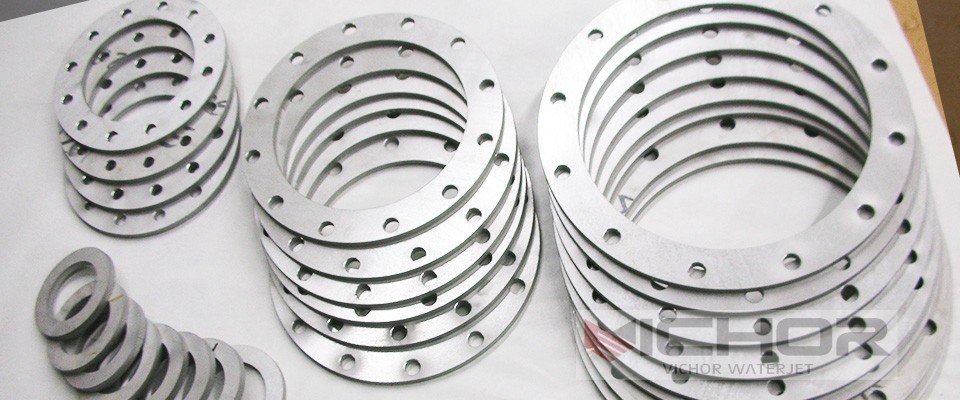
7 Powerful Reasons to Use a Water Jet to Cut Metal (+ Key FAQs Answered)
In the realm of metal fabrication, precision, efficiency, and material integrity are non-negotiable. While lasers, plasma torches, and traditional mechanical blades have long been staples in the industry, a superior method has steadily risen to prominence: using a water jet to cut metal. This technology, which harnesses the relentless force of water and abrasive to slice through even the toughest alloys, offers a unique combination of benefits that other processes simply cannot match. But what makes it so special, and is it the right choice for your project? This in-depth article explores seven compelling reasons to choose a water jet to cut metal, explains the process in detail, and answers the most common questions fabricators have.
How Does a Water Jet Actually Cut Metal?
At first glance, the idea of using water to cut through solid metal seems improbable. However, the science behind it is both straightforward and brilliant. The process does not rely on brute force alone but on precise, high-energy erosion.
A high-pressure pump, typically an intensifier or direct-drive pump, pressurizes ordinary water to an extreme level, anywhere from 60,000 to 90,000 pounds per square inch (PSI). This ultra-high-pressure water is then focused through a small, precision orifice—often made of sapphire or diamond—creating a supersonic stream of water thinner than a human hair. For cutting hard materials like metal, an abrasive substance (most commonly garnet) is introduced into the stream inside a mixing tube. The water stream accelerates these abrasive particles to incredible speeds, creating a focused erosive jet that micromachines the metal away along a computer-controlled (CNC) path. This results in a clean, precise cut without generating heat, which is the cornerstone of its advantages.
The Top 7 Advantages of Using a Water Jet to Cut Metal
Choosing a water jet to cut metal isn’t just about making cuts; it’s about enhancing your entire fabrication process. Here are the seven most powerful benefits:
Zero Heat-Affected Zone (HAZ): This is the most significant advantage. Thermal cutting processes like laser and plasma generate intense heat, which alters the metallurgical properties of the metal along the cut edge. This can create hardened areas, warping, and thermal stress that may require secondary processing. A water jet is a “cold” cutting process, leaving the metal’s internal structure completely unchanged. This is critical for metals that are heat-treated or will be subjected to high stress.
Unmatched Material Versatility: A single water jet to cut metal can process a staggering range of materials. From aluminum and mild steel to exotic alloys like titanium, Inconel, and tool steel, it handles them all with ease. Furthermore, the same machine can cut non-metallic materials like stone, glass, plastics, and composites, making it an incredibly flexible investment.
Exceptional Precision and Detail: Water jets are CNC-controlled, allowing for exceptional accuracy, often within tolerances of ±0.003 inches (±0.076 mm). They can produce intricate shapes, sharp corners, and complex geometries that would be difficult or impossible with other methods. This eliminates the need for multiple specialized machines for different cut requirements.
No Hardening or Warping: Since there is no heat input, the problem of warping thin sheet metal or hardening the edges of hard metals is completely eliminated. Parts come out flat and true to their original state, reducing or eliminating costly straightening and finishing operations.
Ability to Cut Very Thick Materials: Water jets excel at cutting thick metal plates. While a laser might struggle with thicknesses beyond one inch, an abrasive water jet can cleanly cut metal plates that are six, eight, or even twelve inches thick, depending on the material and pump power.
Environmentally Friendly Process: The process produces no hazardous fumes, vapors, or toxic gases. The primary waste products are water and spent abrasive (garnet), which is non-toxic and can often be recycled or disposed of more easily than the waste from thermal cutting processes.
Minimal Material Waste: The water jet stream, or “kerf,” is very narrow (typically around 0.04 inches). This allows parts to be nested extremely closely together on a sheet of metal, maximizing material yield and significantly reducing scrap costs, especially when working with expensive metals.
What Types of Metal Can You Cut with a Water Jet?
The short answer is: almost all of them. The abrasive jet does not discriminate based on hardness or alloy composition. This makes a water jet to cut metal the universal solution for fabricators. Key examples include:
Aluminum: From thin sheets to thick plates, with no melting or warping.
Stainless Steel: Ideal for food-grade, medical, and architectural applications where a perfect, uncontaminated edge is required.
Titanium and Exotic Alloys: Essential for aerospace and military applications where the heat from other methods would compromise the metal’s integrity.
Brass and Copper: These thermally conductive metals are difficult for lasers but are easily handled by a water jet.
Tool Steel and Hardened Steel: The cold-cutting process prevents cracking or softening of the hardened material.
Key Considerations When Using a Water Jet for Metal Cutting
While powerful, the technology has its own set of operational parameters to consider for optimal results.
Cutting Speed vs. Thickness: As metal thickness increases, the cutting speed must decrease to maintain edge quality and accuracy. While it can cut very thick metal, it will do so more slowly than a plasma cutter might on thinner materials.
Edge Quality and Taper: The cut edge will have a matte, satin finish. A natural, slight V-shaped taper (wider at the top than the bottom) is inherent to the process. For applications requiring perfectly perpendicular edges, modern software can use dynamic head control to compensate for and eliminate this taper.
Operating Costs: The ongoing costs include electricity, abrasive garnet (a significant consumable), and replacement parts for the pump and cutting head (e.g., orifices and mixing tubes).
Noise and Maintenance: Abrasive water jet systems are loud and require operators to wear hearing protection. The systems also require regular maintenance to ensure pump health and consistent cutting performance.
Frequently Asked Questions About Using a Water Jet to Cut Metal
Q1: How thick of a metal can a water jet actually cut?
A: Abrasive water jets can cut metal over 12 inches thick. The practical thickness depends on the material’s hardness and the pump’s pressure. For example, it can cut aluminum thicker than stainless steel because it is a softer material.
Q2: What is the tolerance and edge quality like?
A: A well-maintained machine can hold tolerances of ±0.003″ to ±0.005″. The edge quality is a smooth, dull finish. It is not a mirror polish but is ready for welding or further machining without extensive cleaning. The lack of hardening is a key quality advantage.
Q3: Is it expensive to operate a water jet for metal?
A: The operational cost is a balance. The initial investment and consumables (abrasive, parts) are factors. However, this must be weighed against the savings from reduced secondary processing, less material waste, and the versatility of cutting any metal with one machine. For many shops, the total cost of ownership is highly competitive.
Q4: Can a water jet start a cut in the middle of a metal plate?
A: Yes. The jet can pierce through metal plate, though the pierce time is slower than the cutting time and varies with thickness. To avoid a slight imperfection at the pierce point, programmers often start the cut on an edge or use a “pierce-and-dwell” technique.
Q5: How does it compare to laser or plasma for cutting metal?
A:
vs. Laser: Laser is faster on thin to medium-thickness metals but creates a HAZ. Lasers struggle with reflective materials (copper, brass) and very thick plates. Water jet wins on no HAZ, thickness, and material versatility.
vs. Plasma: Plasma is very fast and cost-effective for thicker mild steel but has a large HAZ and poorer precision. Plasma cut edges are typically rougher and require cleaning for welding. Water jet wins on precision, edge quality, and no HAZ.
The Future of Metal Fabrication is Fluid
Using a water jet to cut metal represents a shift towards smarter, more flexible, and higher-quality fabrication. Its ability to handle any metal without compromising its properties makes it an indispensable tool for industries where precision and integrity are paramount, such as aerospace, defense, and medical device manufacturing. While speed and cost for high-volume, simple parts may still favor other methods, the water jet’s unparalleled versatility and quality secure its place as the ultimate problem-solver in the modern metal shop. By understanding its advantages and applications, fabricators can make an informed decision that boosts their capability, quality, and bottom line.
continue reading




